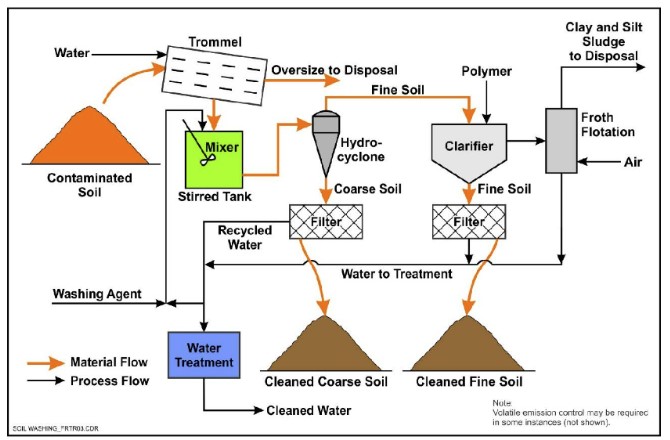Why PFAS Treatment Is Crucial for Eliminating Harmful Chemical Exposure
Wiki Article
Cutting-edge PFAS Treatment Solutions for Safer Water
The enhancing frequency of PFAS contamination in water materials necessitates an important assessment of innovative therapy options. Advanced purification innovations and unique chemical treatments existing encouraging methods for decreasing these consistent toxins. In addition, arising bioremediation strategies provide a more sustainable strategy to dealing with PFAS challenges. As regulatory structures remain to adapt, understanding the efficiency and scalability of these remedies comes to be critical. What effects do these developments hold for public health and ecological remediation, and exactly how can stakeholders efficiently apply them in varied contexts?Summary of PFAS Contamination
PFAS contamination has become a substantial environmental and public health problem. Per- and polyfluoroalkyl materials (PFAS) are a group of synthetic chemicals known for their persistence in the environment and human body, leading them to be frequently referred to as "permanently chemicals." These compounds have actually been widely utilized in different sectors, including firefighting foams, water-repellent fabrics, and food packaging, mainly as a result of their water- and grease-resistant homes.The widespread use PFAS has actually resulted in their discovery in soil, water supplies, and also in the blood of people and pets. Studies have actually connected PFAS direct exposure to countless health issues, consisting of developmental effects in infants, immune system disorder, and different forms of cancer cells. Additionally, the ecological persistence of these compounds complicates their degradation and elimination, raising problems about long-term environmental impacts.
Governing bodies are significantly applying stringent standards to keep track of and reduce PFAS degrees in drinking water and other environmental mediums. As understanding of PFAS contamination grows, it has ended up being crucial for areas and sectors to look for effective therapy options to alleviate direct exposure and secure public wellness.
Advanced Filtration Technologies
As the seriousness to attend to PFAS contamination magnifies, progressed filtration technologies have emerged as a critical element in the remediation initiatives intended at getting rid of these relentless chemicals from water sources. These technologies leverage advanced mechanisms to successfully target and record PFAS compounds, which are notoriously resistant to traditional therapy techniques.Among the most promising approaches is the usage of granular triggered carbon (GAC), which adsorbs PFAS particles because of its high surface location and permeable structure. This method has actually been widely implemented in both municipal and industrial settings, demonstrating considerable reductions in PFAS focus. In addition, ion exchange resins have actually acquired traction, specifically made to selectively bind PFAS ions from water, thus facilitating their elimination.
Membrane purification innovations, such as reverse osmosis and nanofiltration, also reveal efficacy in PFAS removal by literally separating impurities from water - pfas management. These systems can accomplish high degrees of pureness, making them appropriate for alcohol consumption water applications
Chemical Therapy Developments
Many chemical therapy advancements are being checked out to properly resolve PFAS contamination in water supplies. One promising approach involves the use of innovative oxidation procedures (AOPs), which utilize effective oxidants such as ozone, hydrogen peroxide, or chlorine dioxide combined with UV light to break down PFAS substances right into less unsafe compounds. This approach has actually demonstrated efficacy in lab settings, revealing prospective for scalability in real-world applications.Another ingenious method is the growth of ion-exchange resins particularly made to target PFAS. These materials can uniquely adsorb PFAS compounds from water, enabling their removal during therapy procedures. Current improvements have actually improved the efficiency and capability of these materials, making them a favorable choice for water treatment facilities.
In addition, scientists are investigating the usage of chemical representatives like persulfate and ferrous ions to boost the degradation of PFAS in infected water. These agents can cause chemical responses that facilitate the malfunction of relentless PFAS compounds.
Arising Bioremediation Strategies
Recent advancements in chemical therapy advancements have actually paved the method for exploring bioremediation methods as a viable choice for dealing with PFAS contamination. Bioremediation harnesses the natural metabolic procedures of microbes to weaken or change pollutants, making it an enticing approach for dealing with consistent pollutants like PFAS.
Arising methods in bioremediation include making use of genetically engineered microorganisms that can especially target and damage down PFAS substances. These microbial pressures are being established for their boosted destruction abilities, enhancing the efficiency of the removal procedure. Additionally, scientists are examining the possibility of plant-assisted bioremediation, where specific plant species may uptake and withdraw PFAS from contaminated soil and water.
Another appealing technique is the application of bioaugmentation, which entails introducing beneficial microorganisms into polluted atmospheres to improve the destruction of PFAS. This technique can assist in much faster removal timelines and improve general effectiveness.

Regulative Structures and Standards
A thorough regulatory structure is crucial for effectively managing PFAS contamination and ensuring public wellness protection. The increasing acknowledgment of per- and polyfluoroalkyl compounds (PFAS) as environmental toxins has prompted various government and state firms to create requirements that control their visibility in water supplies. The U.S. Environmental Security Agency (EPA) has established wellness advisories and is pursuing setting enforceable restrictions for PFAS in drinking water.State-level policies differ dramatically, with some states adopting more stringent guidelines than those recommended by the EPA. These guidelines typically include optimum contaminant degrees (MCLs) for particular PFAS substances, monitoring demands, and reporting obligations for water utilities. Furthermore, arising frameworks concentrate on the removal of polluted sites, highlighting the need for effective therapy innovations.

Final Thought
To conclude, the advancement and implementation of innovative PFAS treatment remedies are important for resolving the prevalent problem of water contamination. Advanced purification modern technologies, chemical treatments, and arising bioremediation strategies collectively offer a diverse approach to effectively reduce and break down PFAS degrees. As regulatory frameworks proceed to develop, incorporating these modern technologies will be important to guard public health and wellness and bring back the integrity of infected water resources, inevitably adding to a cleaner and much safer atmosphere.Report this wiki page